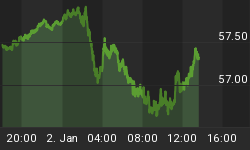Below is an extract from a commentary originally posted at www.speculative-investor.com on 25th September 2005.
One of the most important keys to the gold sector's performance -- not just its performance in absolute terms but relative to all other sectors of the stock market -- is the yield-spread (the spread between long-term interest rates and short-term interest rates). The gold sector has a stronger positive correlation with the US yield-spread than any other sector of the market, meaning that the gold sector tends to perform very well when long-term interest rates are rising RELATIVE TO short-term interest rates and poorly when short-term interest rates are rising RELATIVE TO long-term interest rates. We've capitalised "relative to" in the preceding sentence because it only matters how long-term and short-term rates are moving relative to each other, not how they are moving in absolute terms. For example, the interest rate backdrop would be bullish for gold stocks if interest rates were rising across the curve with long-term rates rising faster than short-term rates, but bearish for gold stocks if interest rates were rising across the curve with short-term rates rising faster than long-term rates.
The below chart comparison of the XAU/XOI ratio (the Philadelphia Gold & Silver Index divided by the AMEX Oil Index) and a measure of the yield-spread (the yield on the 30-year T-Bond divided by the yield on the 13-week T-Bill) illustrates the point described above. When the yield-spread's intermediate-term trend reverses higher we will most likely be at the beginning of a multi-year period during which gold stocks out-perform oil stocks.

It is possible that the upward 'blip' in both the yield-spread and the XAU/XOI ratio that occurred during the weeks following the Hurricane Katrina disaster will end up marking the start of a major new trend in the markets, although at this stage we are skeptical because the Fed remains committed to its monetary tightening and an increase in inflation expectations stemming from Bush's latest government borrowing/spending binge is only likely to heighten the Fed's resolve. Our view continues to be that the best way to stop the Fed in its tracks will be for the stock and/or commodity markets to tank. But until one or both of these markets begins to decline in earnest the Fed will likely persist with its rate-hiking, resulting in the yield-spread being pushed to new multi-year lows unless long-term interest rates start to rise faster than short-term rates.
We expect that gold stocks will perform exceptionally well relative to oil stocks over the next 2-3 years because at some point over the next few months things will probably get bad enough in the stock and/or commodity markets to prompt the Fed to reverse course. As things currently stand, however, there isn't any decisive evidence that a trend change has occurred.
















